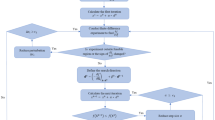Abstract
The relationship between cutting-tool wear and machining parameters has been a focus in the machinery manufacturing field. In this investigation, a modeling method for turning parameters coupling based on minimum cutting-tool wear was presented. The cutting-tool wear divided by surface area of the machined surface was taken as an evaluating level in the experiment. The association between cutting speeds and temperatures and, further, the association between the cutting parameters and temperatures were discussed. The optimal cutting temperature was hence revealed at which the wear of a cutting tool had the least value. The equation between temperature and cutting parameters was obtained with orthogonal experiments, and the cutting parameters coupling were hence determined at the minimum wear of the cutter. Besides, the mechanisms for the minimal wear of the cutter were analyzed in accordance with the characteristics of the cutting tool wear. The study would be beneficial for construction of a cutting database of metal materials.
Similar content being viewed by others
References
Davoodi B, Tazehkandi AH (2014) Experimental investigation and optimization of cutting parameters in dry and wet machining of aluminum alloy 5083 in order to remove cutting fluid. J Clean Prod 68:234–242
Yusup N, Zain AM, Hashim SZM (2012) Overview of PSO for optimizing process parameters of machining. Procedia Eng 29:914–923
Bhattacharya A, Das S, Majumder P, Batish A (2009) Estimating the effect of cutting parameters on surface finish and power consumption during high speed machining of AISI 1045 steel using Taguchi design and ANOVA. Prod Eng Res Devel 3:31–40
Senthilkumaar JS, Selvarani P, Arunachalam RM (2012) Intelligent optimization and selection of machining parameters in finish turning and facing of Inconel 718. Int J Adv Manuf Technol 58:885–894
Öktem H (2009) An integrated study of surface roughness for modeling and optimization of cutting parameters during end milling operation. Int J Adv Manuf Technol 43:852–861
Gopalsamy BM, Mondal B, Ghosh S (2009) Optimisation of machining parameters for hard machining: grey relational theory approach and ANOVA. Int J Adv Manuf Technol 45:1068–1086
Moola MR, Gorin A, Hossein KA (2012) Optimization of various cutting parameters on the surface roughness of the machinable glass ceramic with two flute square end mills of micro grain solid carbide. Int J Precis Eng Manuf 13(9):1549–1554
Mangaraj S, Singh KP (2011) Optimization of machine parameters for milling of pigeon pea using RSM. Food Bioprocess Technol 4:762–769
Thakur DG, Ramamoorthy B, Vijayaraghavan L (2012) Effect of cutting parameters on the degree of work hardening and tool life during high-speed machining of Inconel 718. Int J Adv Manuf Technol 59:483–489
Hamdan A, Sarhan AD, Hamdi M (2012) An optimization method of the machining parameters in high-speed machining of stainless steel using coated carbide tool for best surface finish. Int J Adv Manuf Technol 58:81–91
Munawar M, Chen C, Mufti NA (2011) Investigation of cutting parameters effect for minimization of surface roughness in internal turning. Int J Precis Eng Manuf 12(1):121–127
Aouici H, Yallese MA, Fnides B, Chaoui K, Mabrouki T (2011) Modeling and optimization of hard turning of X38CrMoV5-1 steel with CBN tool: machining parameters effects on flank wear and surface roughness. J Mech Sci Technol 25(11):2843–2851
Saini S, Ahuja IS, Sharma VS (2012) Influence of cutting parameters on tool wear and surface roughness in hard turning of AISI H11 tool steel using ceramic tools. Int J Precis Eng Manuf 13(8):1295–1302
Khamel S, Ouelaa N, Bouacha K (2012) Analysis and prediction of tool wear, surface roughness and cutting forces in hard turning with CBN tool. J Mech Sci Technol 26(11):3605–3616
Palanisamy P, Rajendran I, Shanmugasundaram S (2008) Prediction of tool wear using regression and ANN models in end-milling operation. Int J Adv Manuf Technol 37:29–41
Wu Q, Gao L, Li XY, Zhang CJ, Rong YM (2013) Applying an electromagnetism-like mechanism algorithm on parameter optimisation of a multi-pass milling process. Int J Prod Res 51(6):1777–1788
Author information
Authors and Affiliations
Corresponding author
Rights and permissions
About this article
Cite this article
Sheng, J. A modeling method for turning parameters coupling based on minimum cutting tool wear. Int J Adv Manuf Technol 76, 705–712 (2015). https://doi.org/10.1007/s00170-014-6318-1
Received:
Accepted:
Published:
Issue Date:
DOI: https://doi.org/10.1007/s00170-014-6318-1



